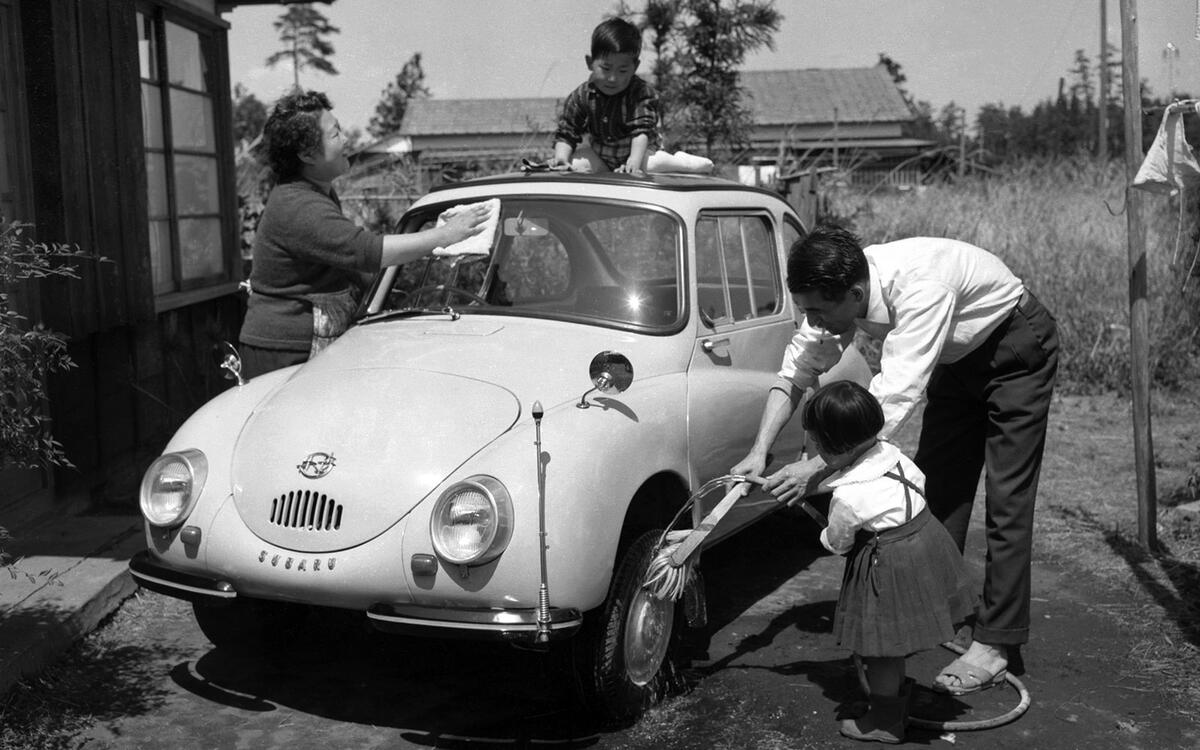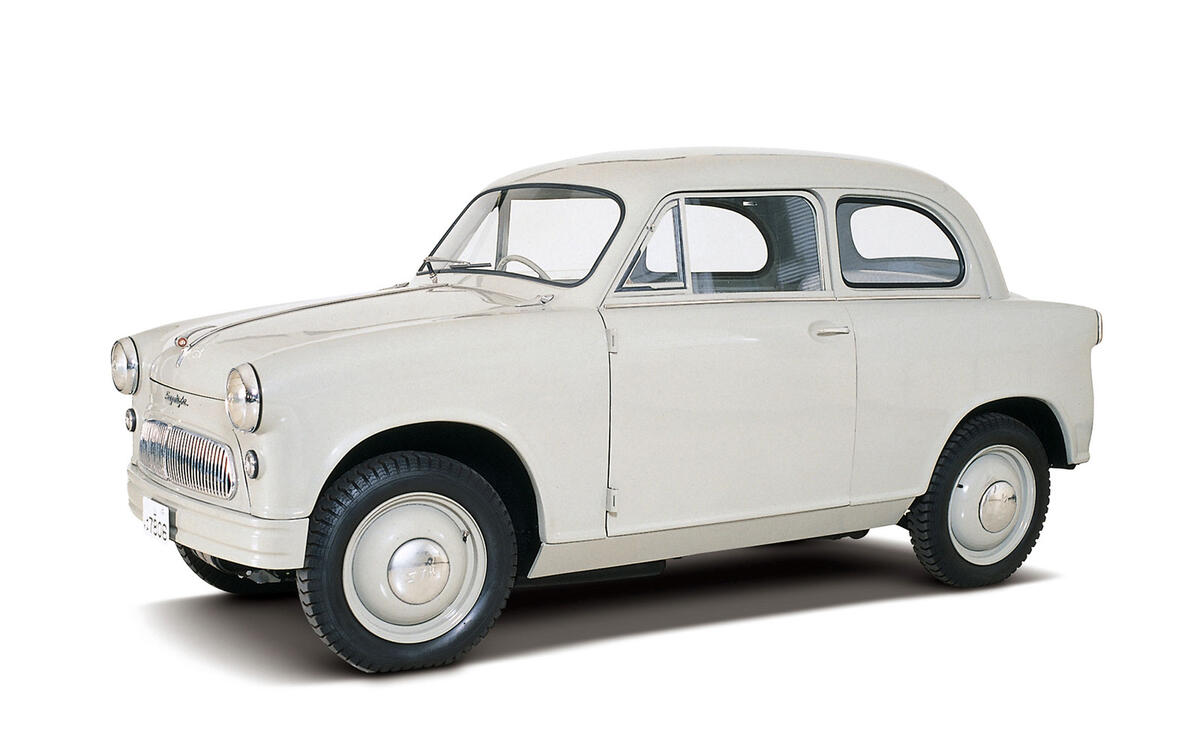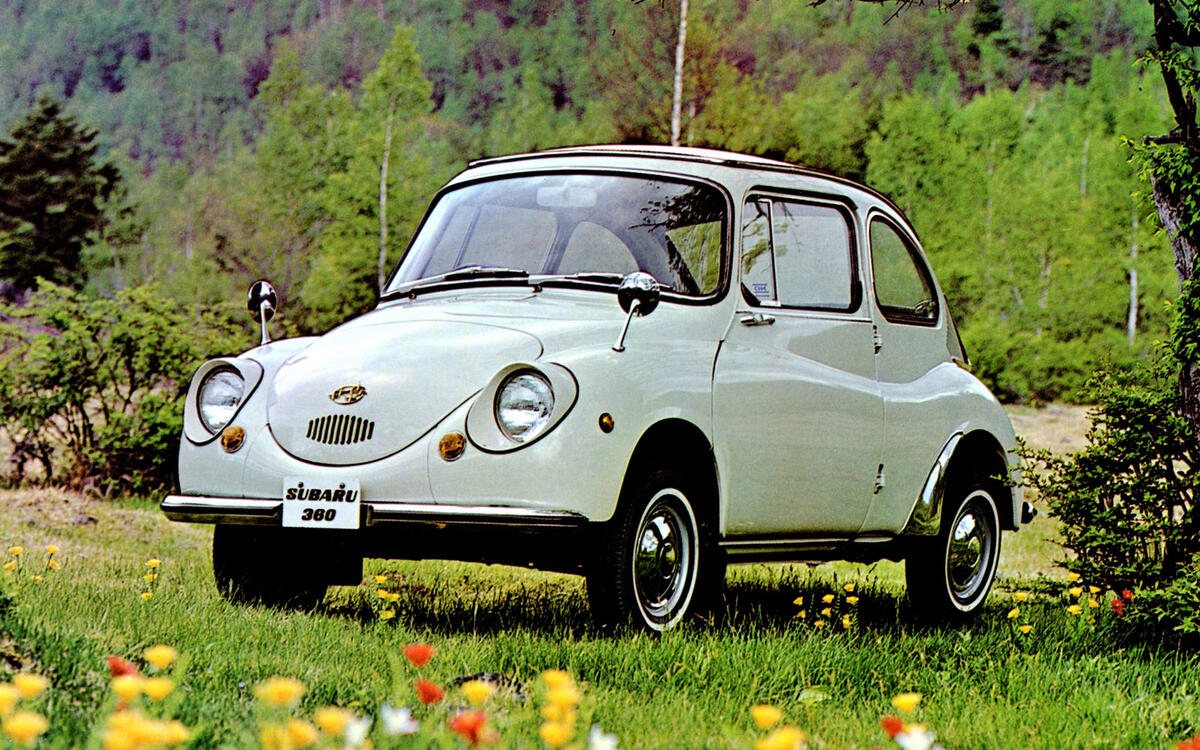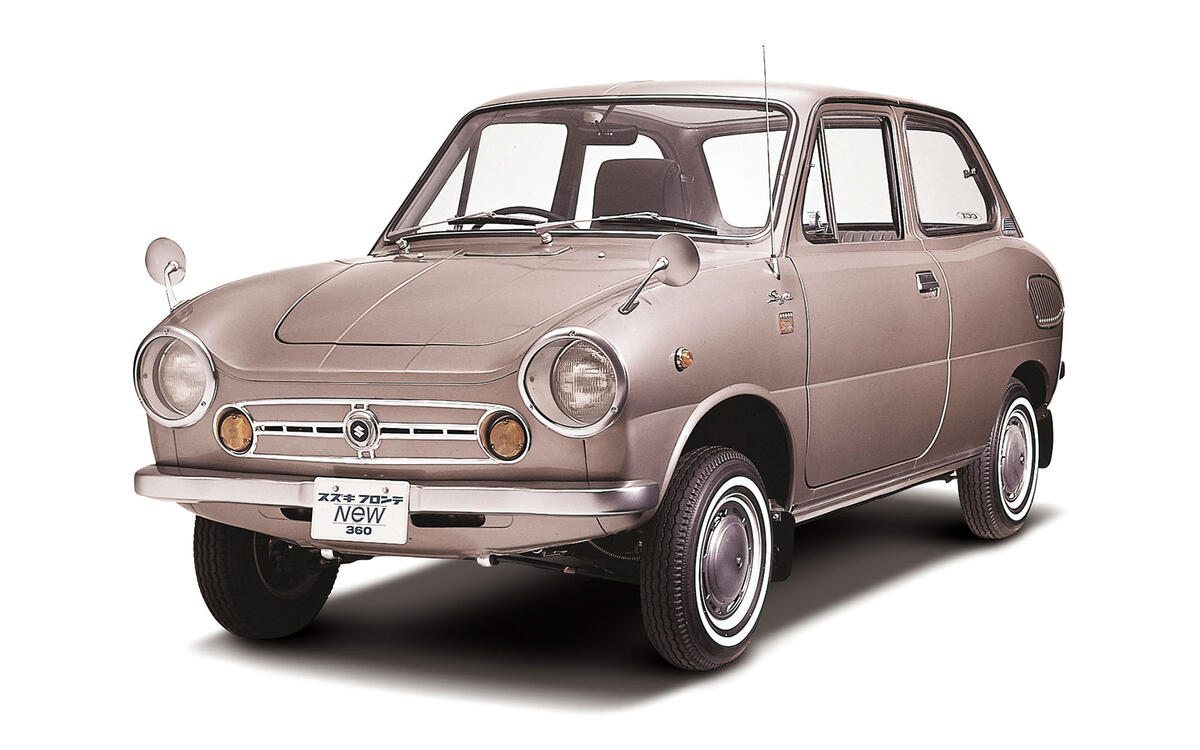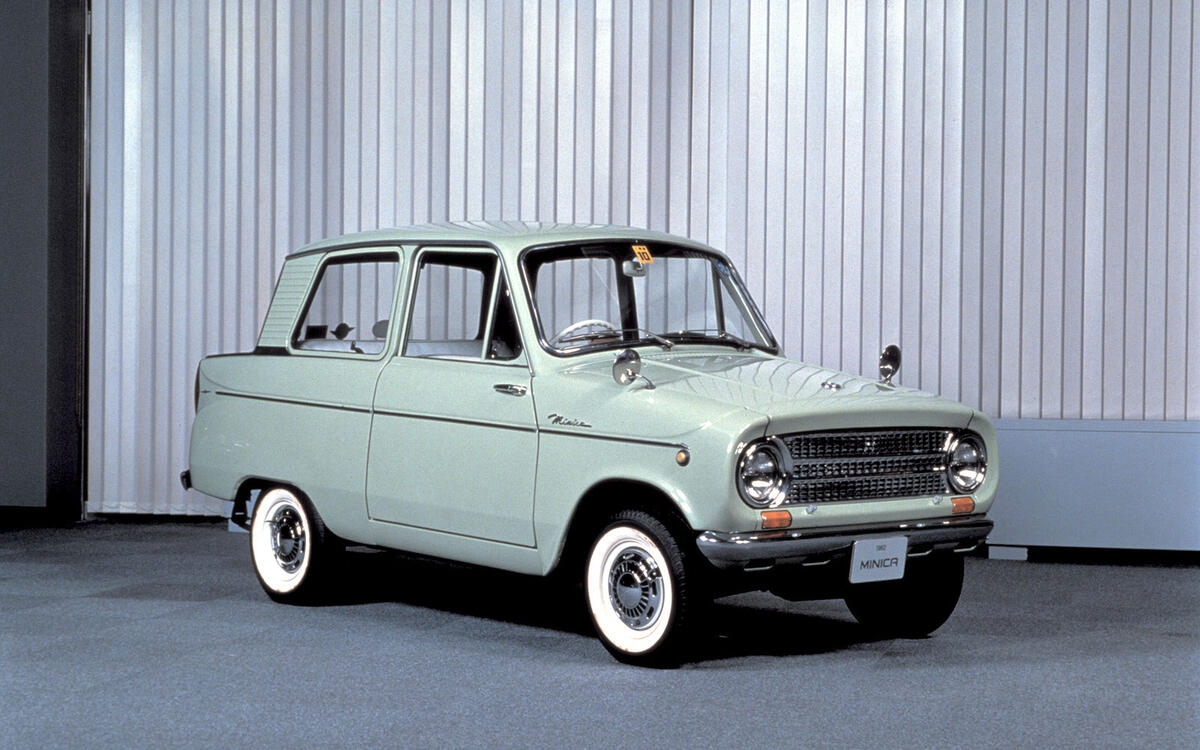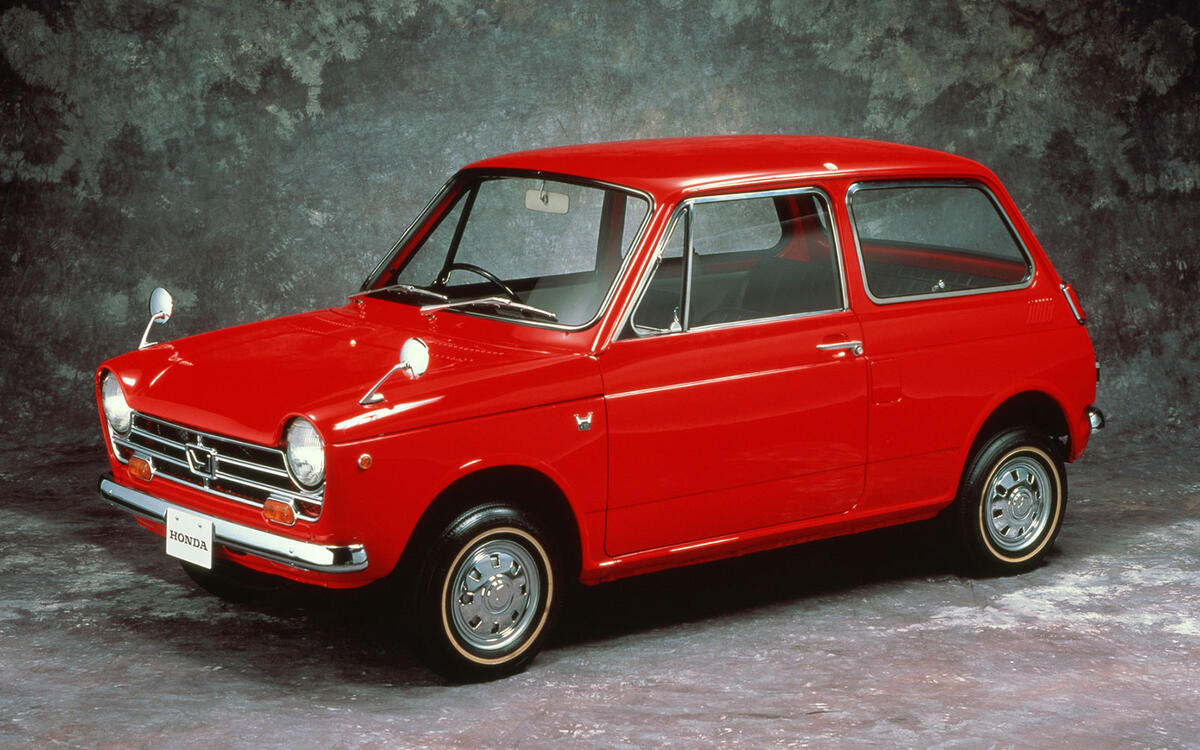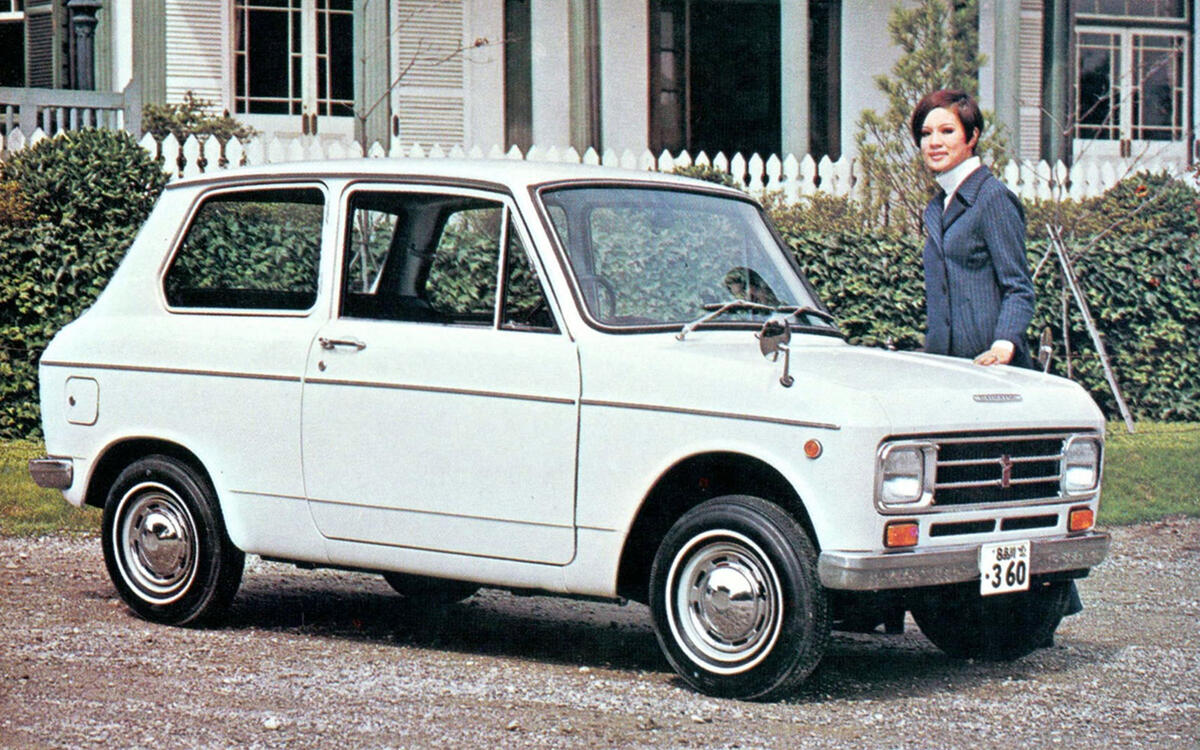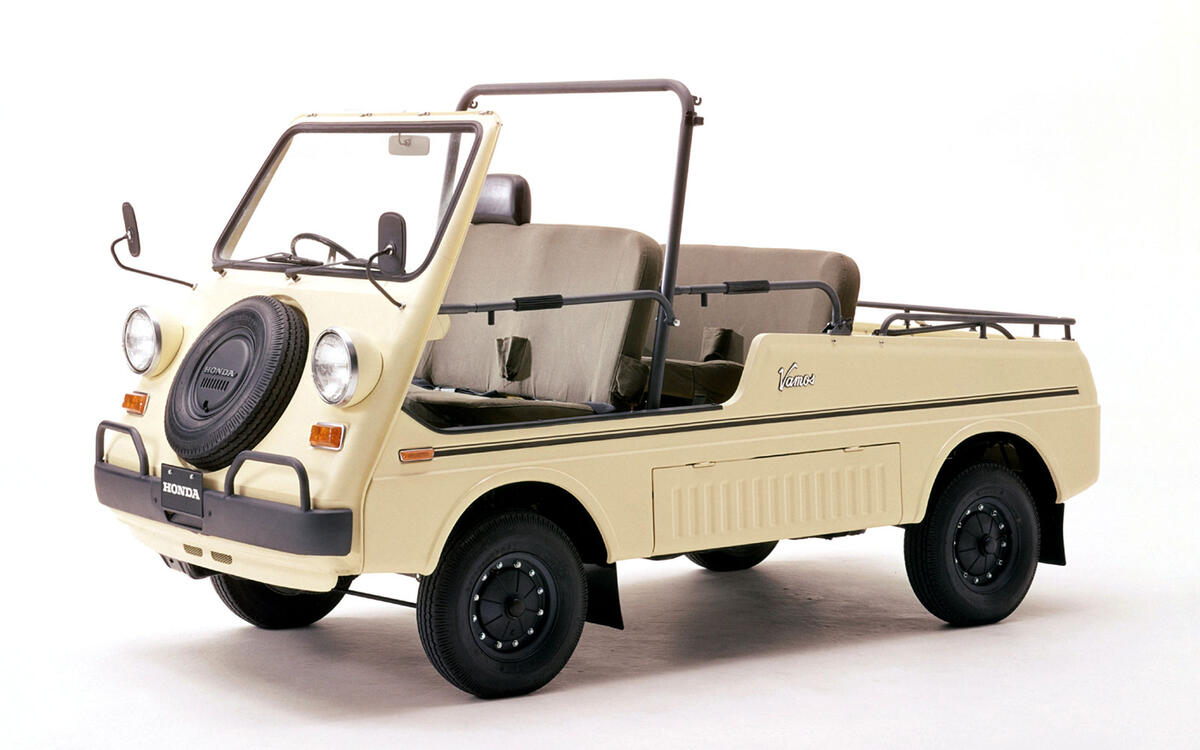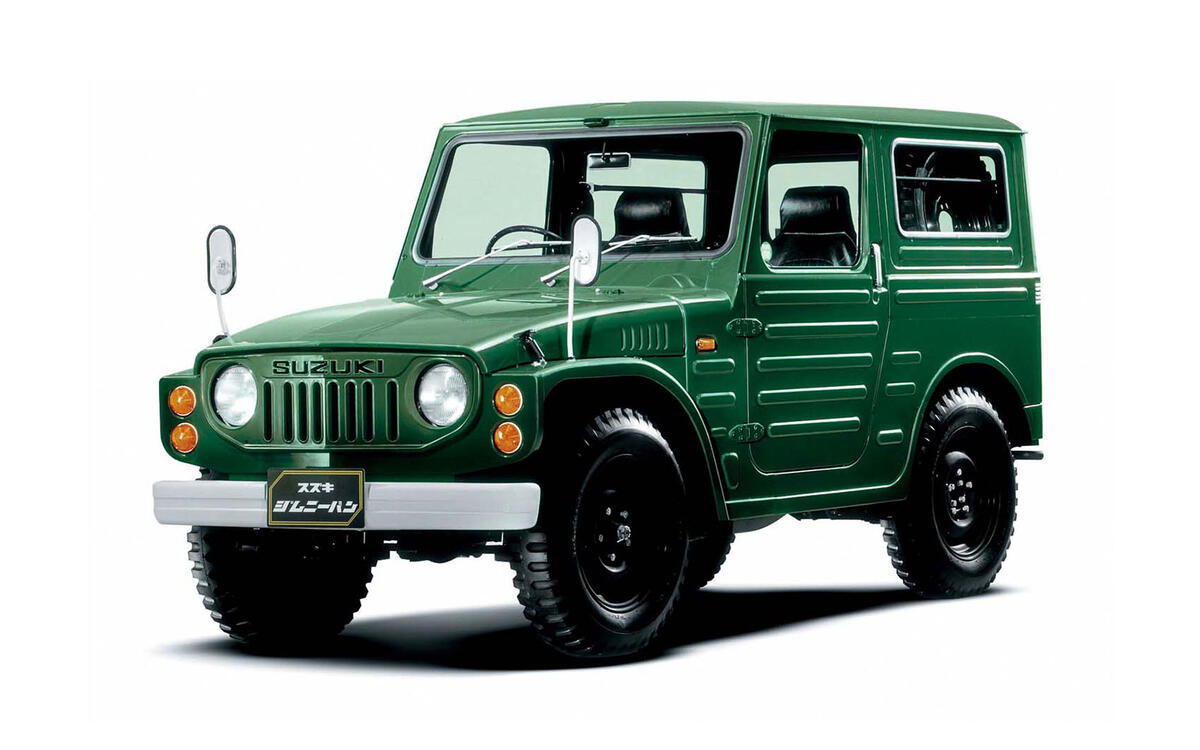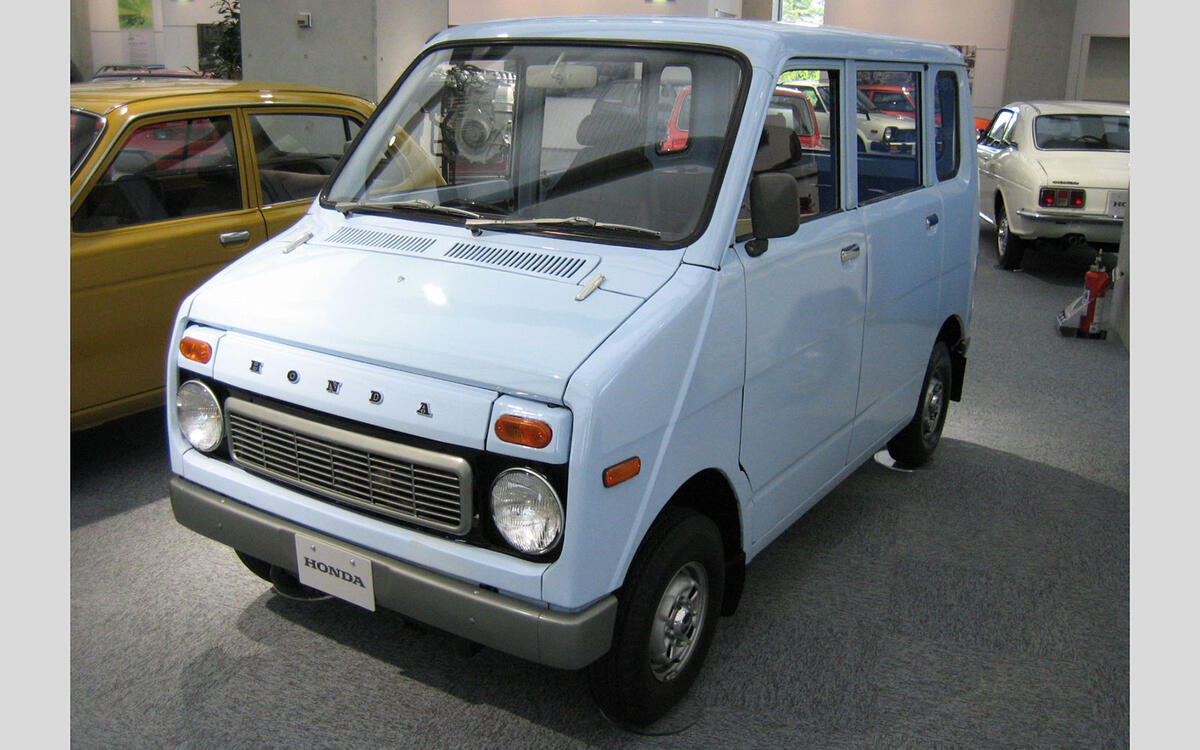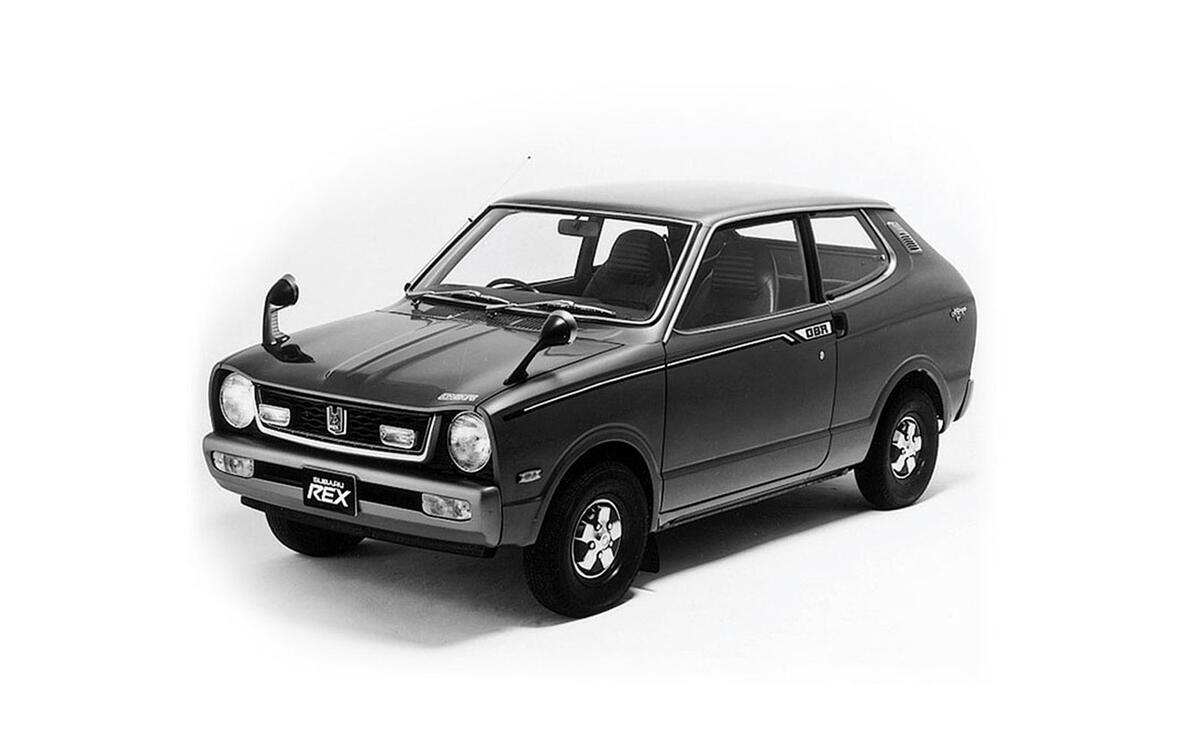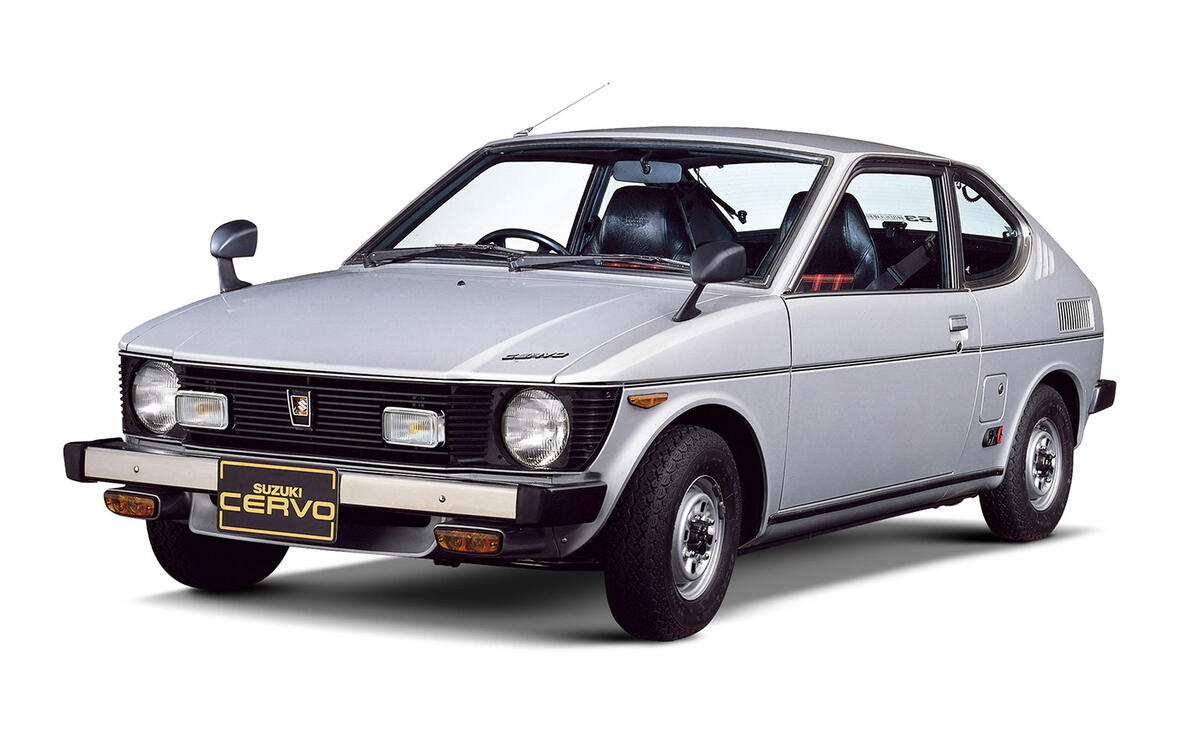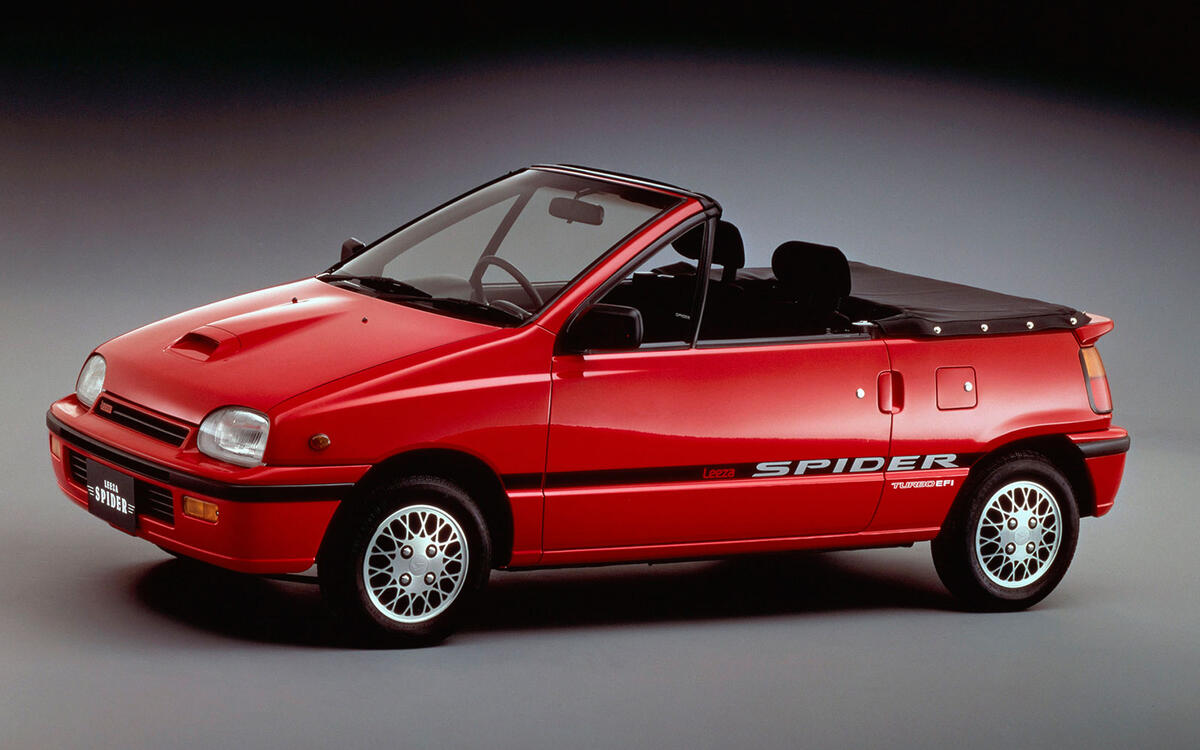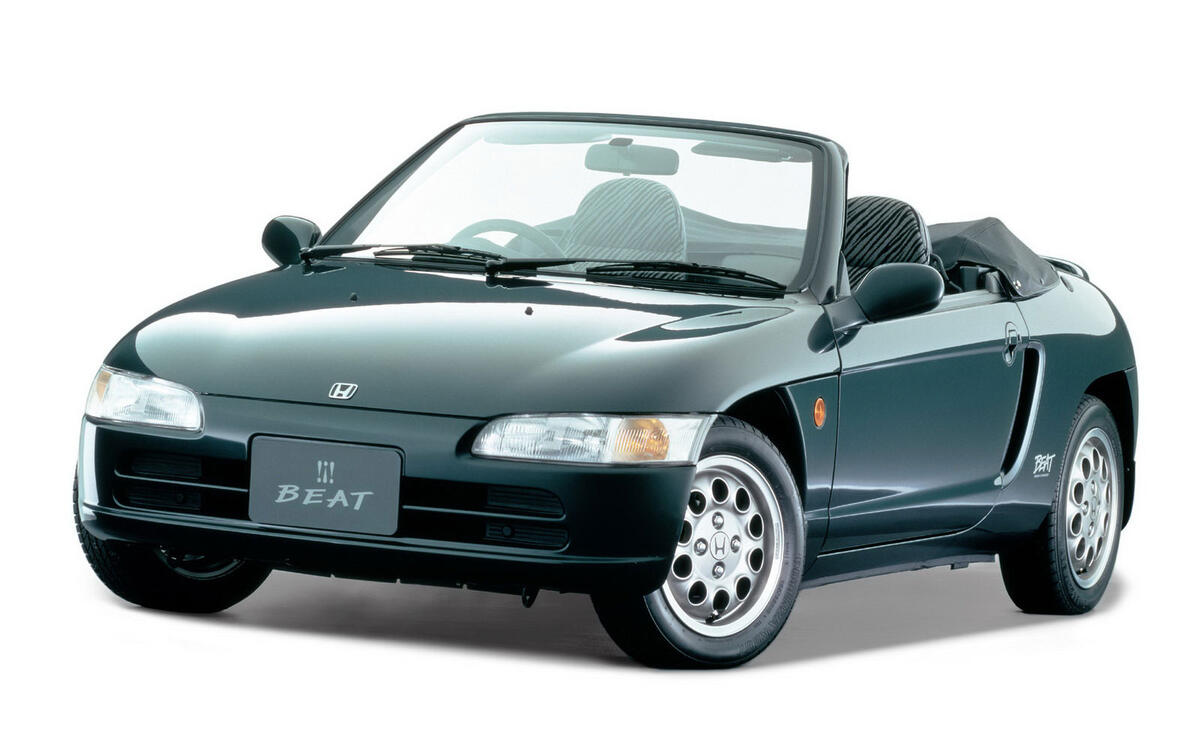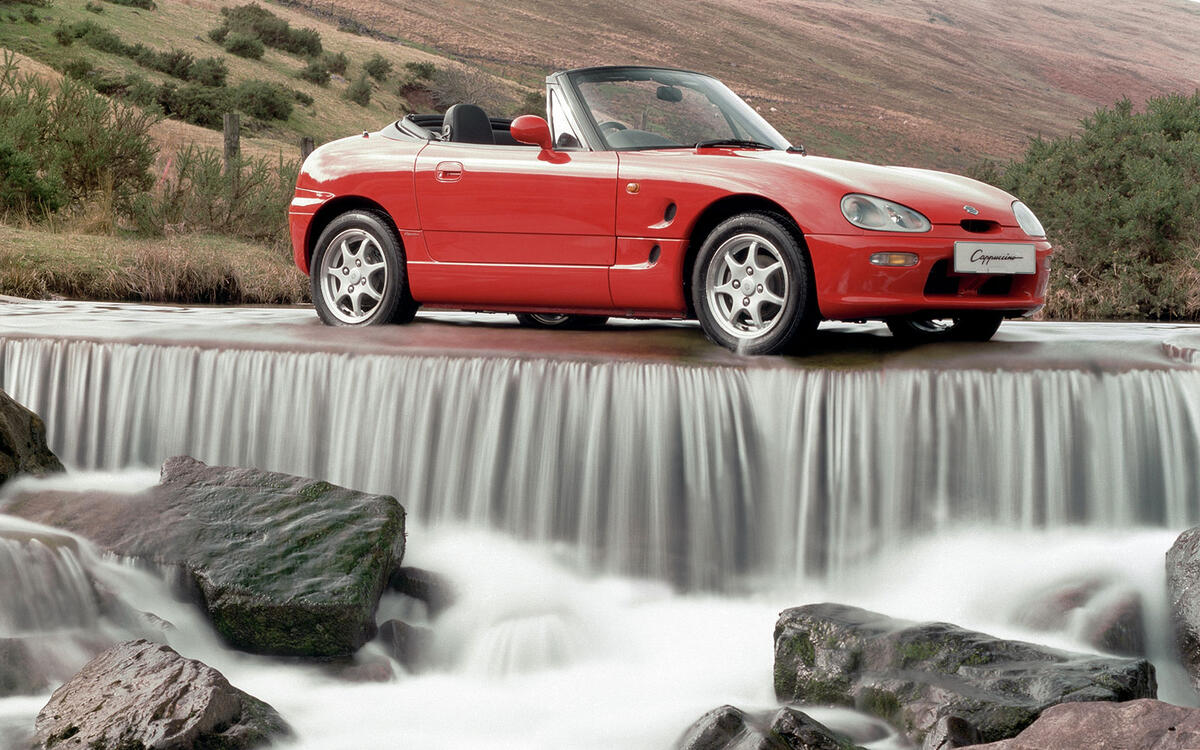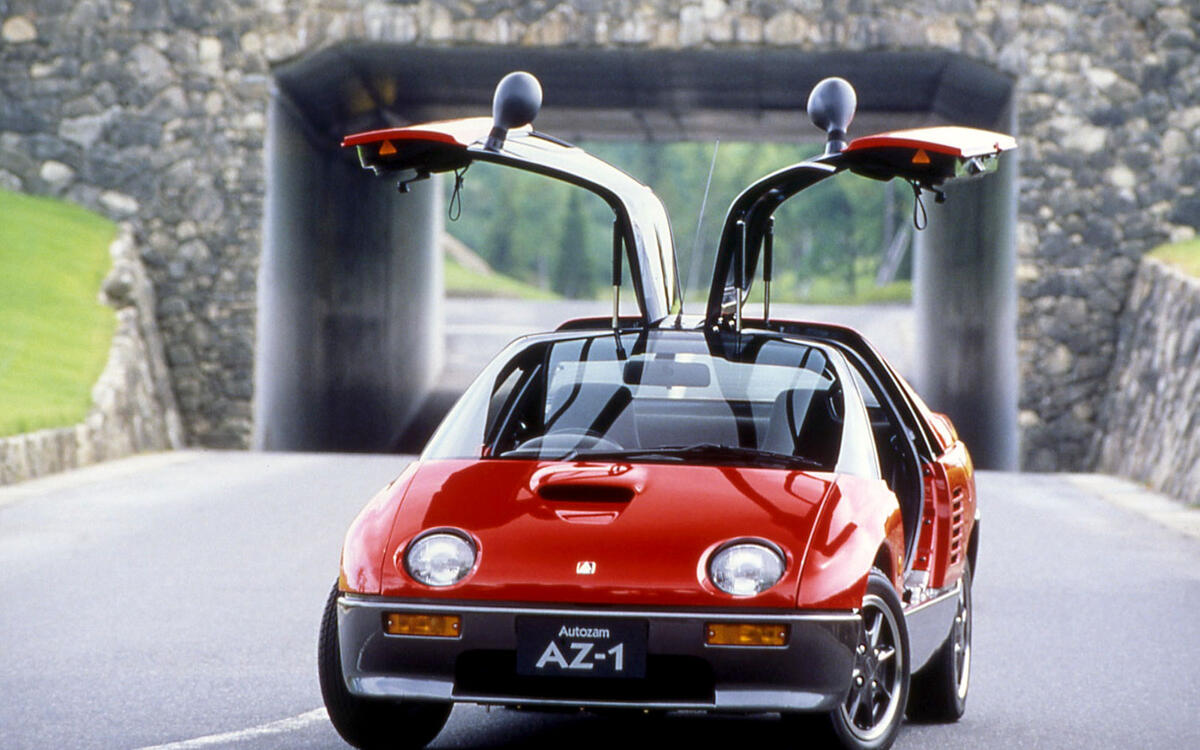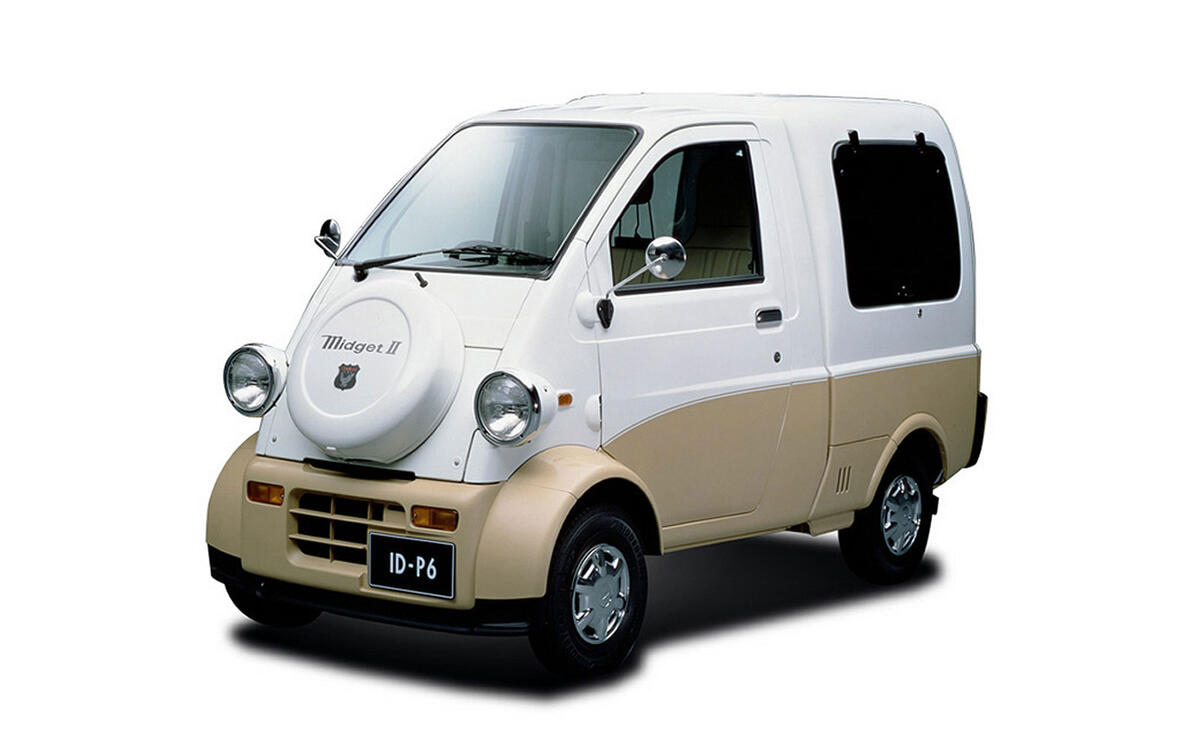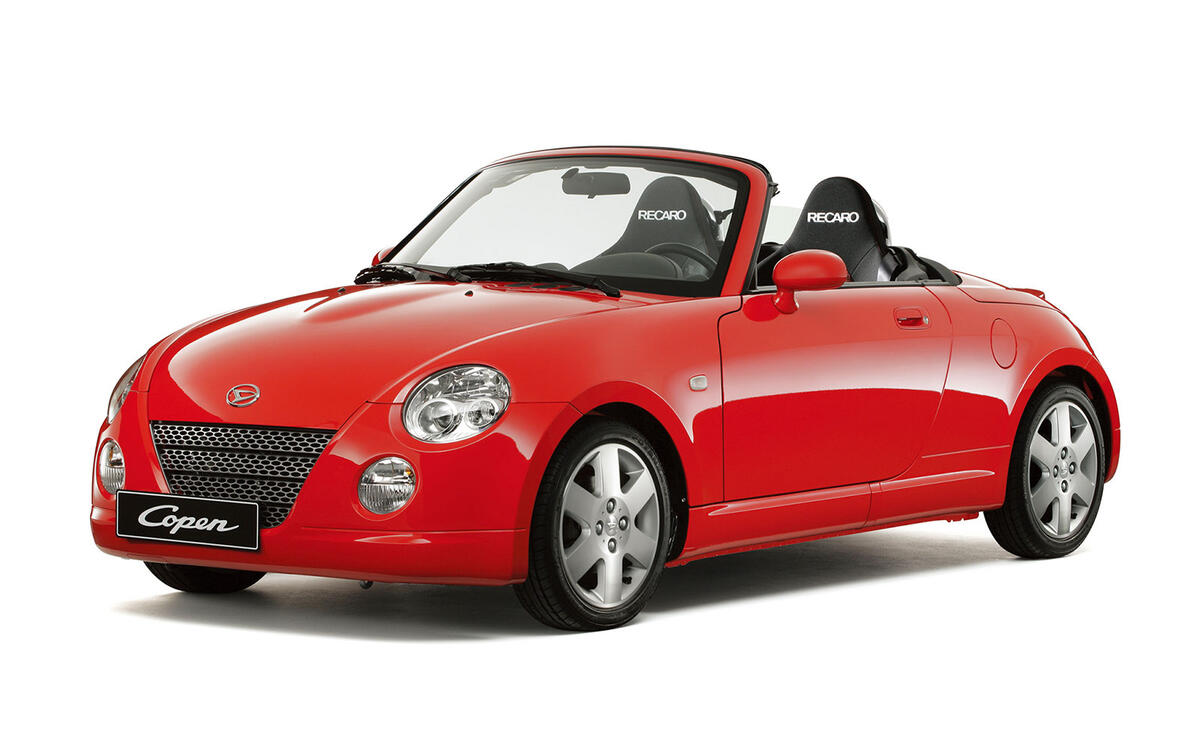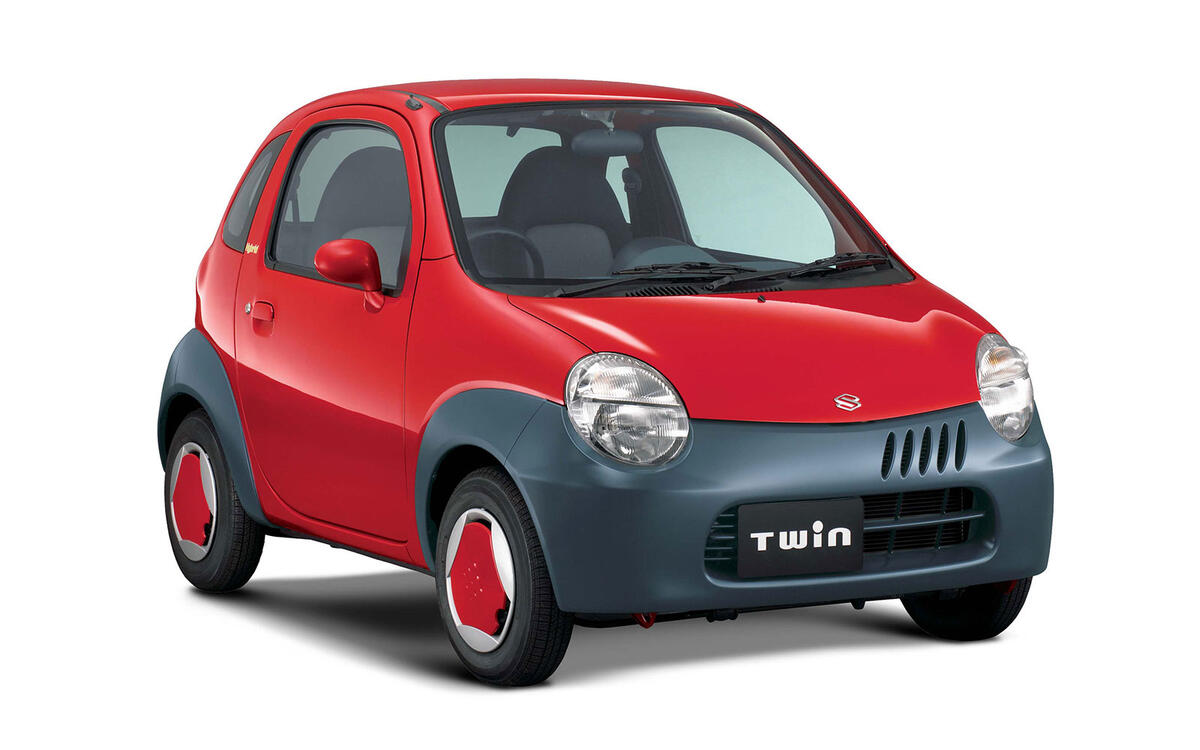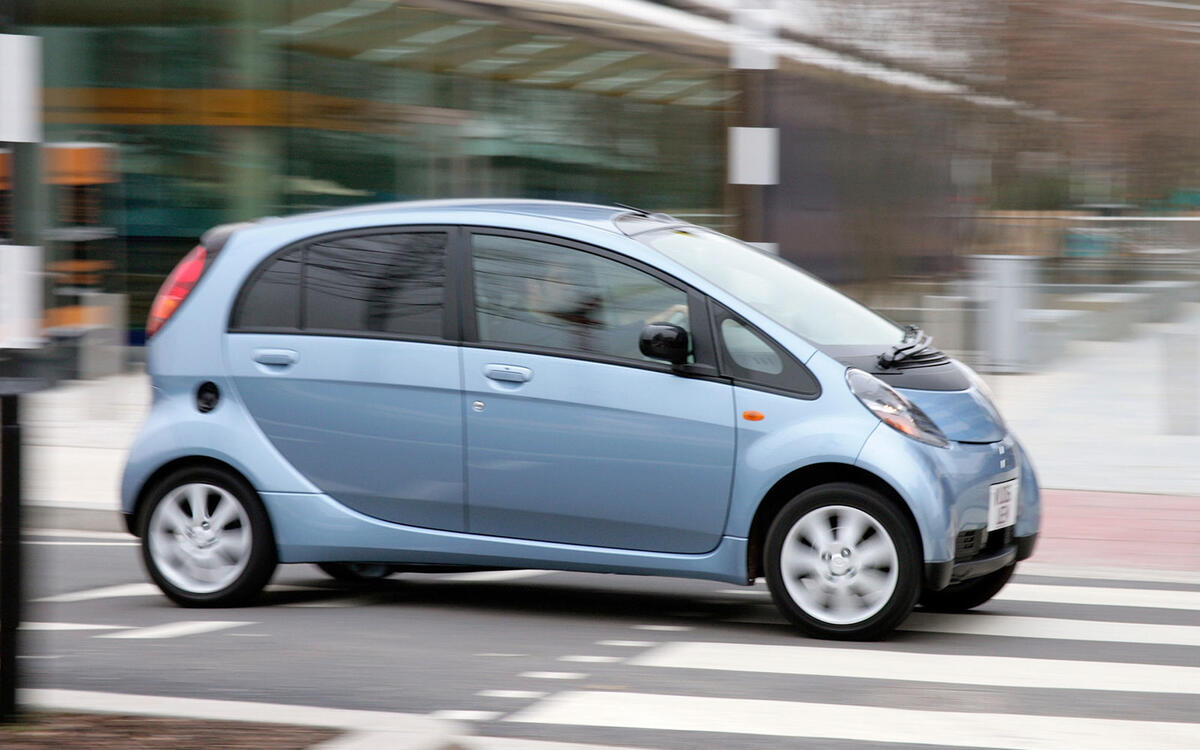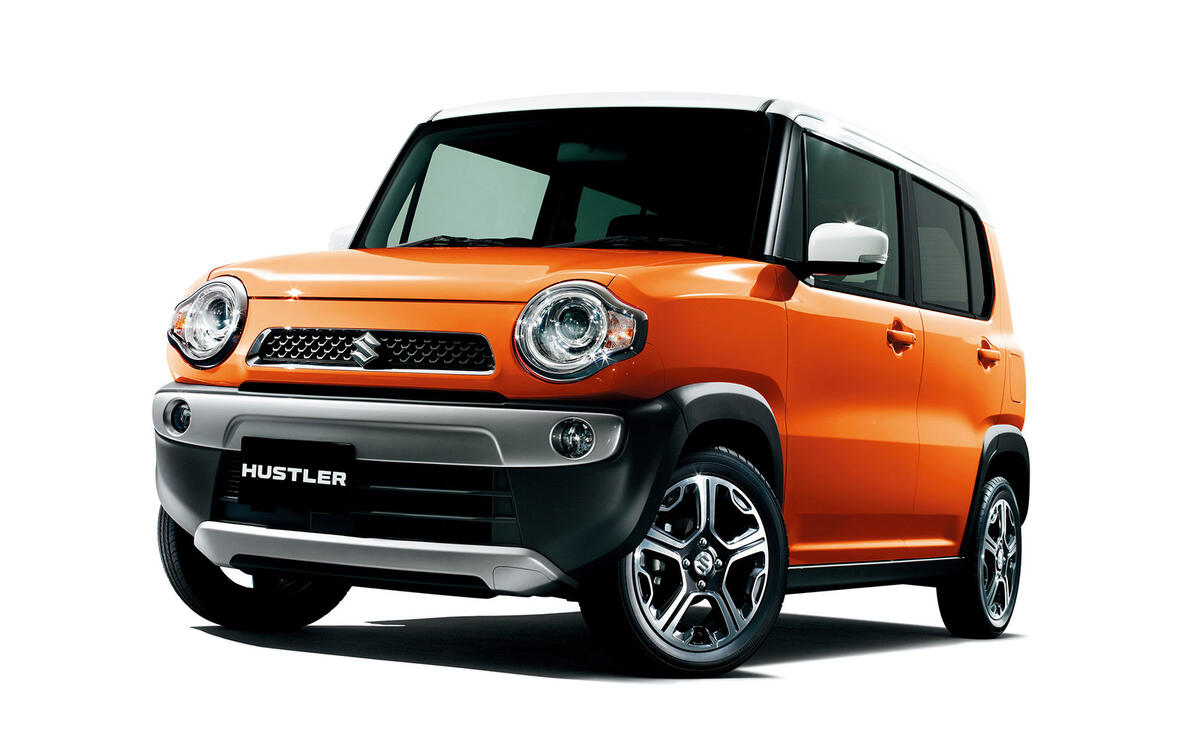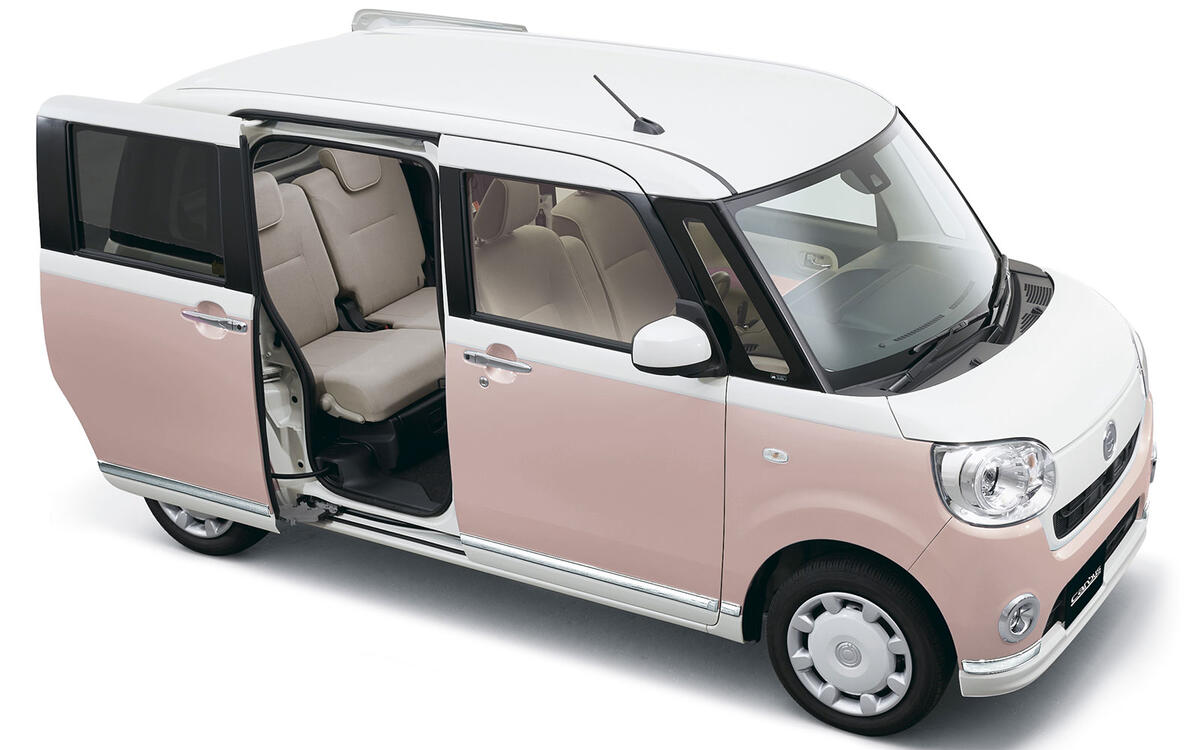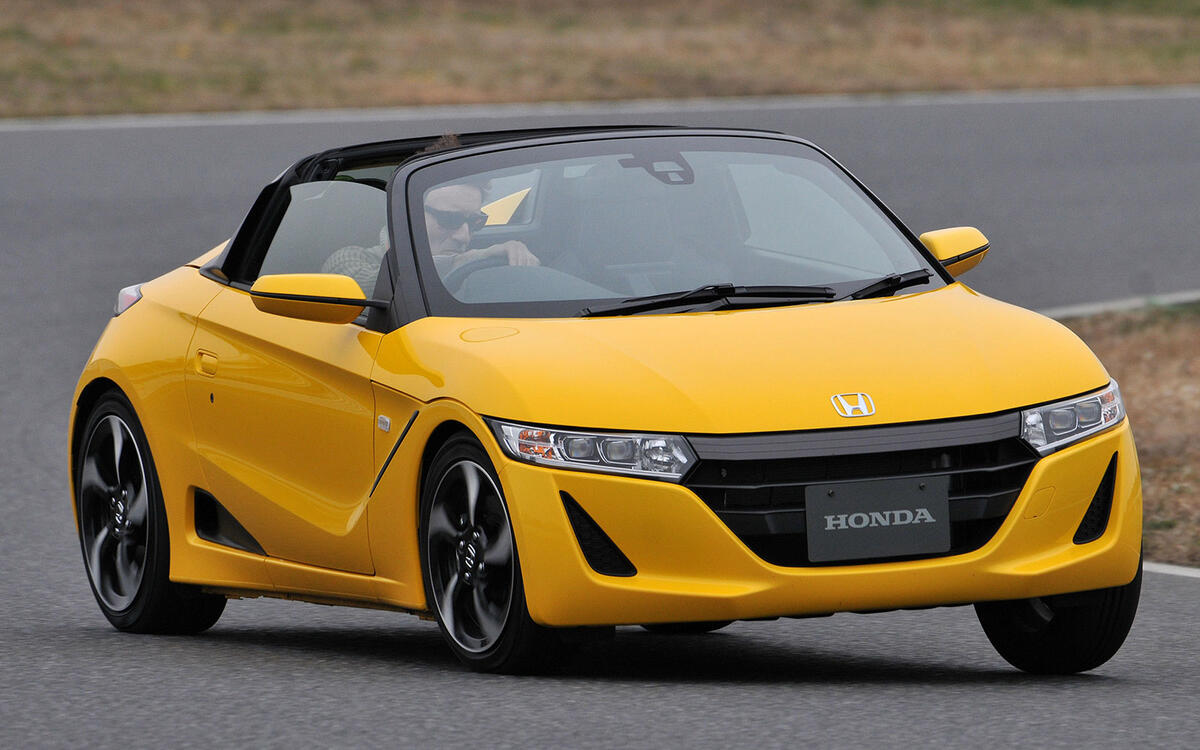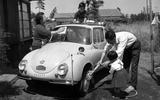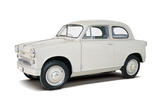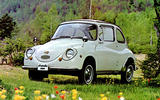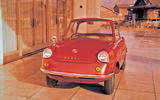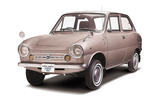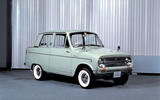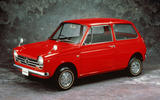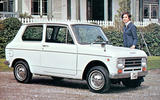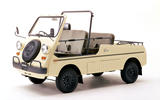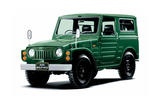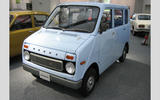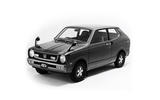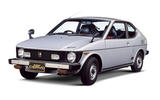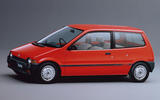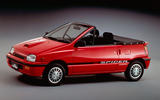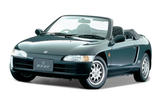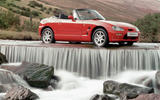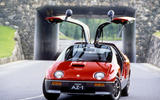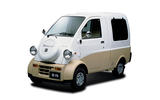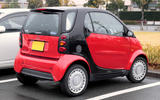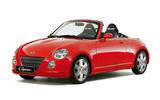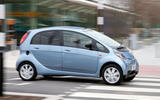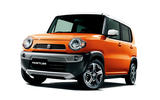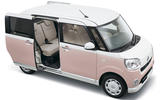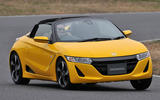 Slide of
Slide of
From the mid-1950s, while Europe enjoyed a microcar boom, in Japan the kei car was gaining momentum.
Created as a new class of vehicle with tax breaks that would provide families with independence and mobility, the class had been launched in 1949 with a 150cc limit. When that was increased to 360cc in 1955, things started to take off and by the early 1960s there was a raft of tiny vehicles buzzing around the streets of Japan.
The kei car class still exists but over the decades the financial incentives for kei car owners have been watered down ever further, and it may not be long before the segment disappears altogether. Here we look at how the kei car phenomenon progressed along with some of the fascinating designs which prove that sometimes the best things really do come in small packages.
 Slide of
Slide of
Suzuki Suzulight (1955)
Suzuki started out as a motorbike manufacturer, but in 1955 it moved into making cars and small trucks with the Suzulight brand – the first ever kei car. First came the SF (Suzuki Four-wheel car) in two-door saloon, van and pick-up forms, each with a 360cc two-cylinder two-stroke engine driving the front wheels. But with just a handful of saloons built, these first forays into four-wheeler production were effectively just commercial vehicles.
 Slide of
Slide of
Subaru 360 (1958)
A world away from the turbocharged four-wheel drive rally monsters of the 1990s, this was Subaru's first passenger car. It featured a rear-mounted 356cc two-cylinder engine, a three-speed gearbox and came in two-door saloon, estate or convertible forms. The 360 even proved popular in America – until the press ran stories of how badly the Subaru fared in a head-on crash with a contemporary US car.
 Slide of
Slide of
Mazda R360 (1960)
Long before the RX-7 or MX-5 were a reality, Mazda kicked off car production with the R360, pitched squarely against rivals from Subaru and Suzuki. With room for four (allegedly), the R360 initially came in two-door coupé form only, although a convertible was added later. The 356cc V-twin engine was rated at a throbbing 16bhp, enough to whisk its occupants all the way up to a heady 52mph.
 Slide of
Slide of
Suzuki Fronte (1962)
After seven years of Suzulight production Suzuki decided to properly embrace the passenger car market. The result was the Fronte, with a 360cc two-stroke two-cylinder engine which drove the front wheels via a three-speed gearbox. Across several more generations, the Fronte remained in production right the way through to 2013, ultimately powered by a 543cc three-cylinder engine.
 Slide of
Slide of
Mitsubishi Minica (1962)
Hard to believe, looking at the picture, that the same company that made the Minica would go on to also make such delights as the 3000GT and Lancer Evo. Mitsubishi launched a series of light trucks in 1961 and using these as a base, a two-door saloon called the Minica was launched the following year, powered by a 359cc air-cooled engine driving the rear wheels.
 Slide of
Slide of
Honda N360 (1967)
The N360 launched Honda into a new area of the market that it had never tried before. Aimed at individuals and families who wanted transport that was cheap but practical, the front-wheel drive N360 came in saloon and estate forms, both of which were exported. Home-market cars got an air-cooled 354cc engine but cars sold overseas generally came with 402cc or 598cc engines.
Perhaps more significantly, the N360 was the first kei car to be offered with an automatic transmission.
 Slide of
Slide of
Daihatsu Fellow (1968)
The first Japanese car to be fitted with rectangular headlights (and if that isn't a selling point we don't know what is), the Fellow's 23bhp 356cc engine was fitted in the nose but drove the rear wheels. Buyers could choose from saloon, estate, van or pick-up variations on the theme.
 Slide of
Slide of
Honda Vamos (1970)
Citroen offered the Mehari and BMC the Mini Moke - while Honda's rather weird open activity vehicle was the Vamos. Positioned in the middle was a 354cc air-cooled overhead-cam two-cylinder engine that drove the rear wheels via a four-speed gearbox. Limited practicality meant just 2500 or so cars were built before production was wound up in 1973.
 Slide of
Slide of
Suzuki LJ (1970)
Suzuki has a long history of producing titchy off-roaders; the company has only just announced an all-new Jimny which will arrive imminently. It all started back in 1970 though, with the LJ10 which featured an air-cooled 359cc engine. By 1972 a water-cooled unit had been fitted in the mildly revised LJ20, as shown here.
 Slide of
Slide of
Honda Life Step Van (1972)
This is what the world needs: more cute retro designs like this one. Except when the Honda Life Step Van arrived in 1972 it wasn't retro. It was a commercial version of the Life, the front-wheel drive 356cc hatchback that took over where the N360 left off.
 Slide of
Slide of
Subaru Rex (1972)
Subaru overhauled the 360 to become the R-2 in 1969, but by 1972 it was time for an all-new contender in the kei car segment: the Rex. Carrying over the R-2's mechanicals, with the same rear-mounted water-cooled two-cylinder engine, the Rex featured a much more modern design and came in saloon or hatch configurations. There would be another two generations of Rex before the brand was killed off in 1992.
 Slide of
Slide of
Suzuki Cervo (1977)
From 1 January 1976, kei cars could be fitted with an engine that displaced up to 550cc; the previous limit was 360cc. They could also be 3.2m long and 1.4m wide (previously 3.0m and 1.3m). Taking advantage of the new rules was the Suzuki Cervo, a two-seater with a 539cc three-cylinder two-stroke engine mounted in the back and driving the rear wheels.
Some export markets got the Cervo as the SC100 'Whzzkid', but with a 970cc engine fitted to pep things up a bit.
 Slide of
Slide of
Honda Today (1985)
With its one-box design the Honda Today featured a pretty advanced design for its day; it looked much like the original Renault Twingo in silhouette, yet the French car arrived seven years later. In the nose was an all-alloy water-cooled 545cc twin-pot (later increased to 656cc) which pushed the Today all the way up to an impressive 81mph.
 Slide of
Slide of
Daihatsu Leeza (1986)
The Leeza was a pretty unremarkable kei car as it was just a rather anonymous three-door hatch that conformed to the normal dimensional regulations and featured the usual tiny powerplant (initially 547cc, later 659cc). But in 1991 came this gloriously ridiculous variant – a turbocharged convertible called the Leeza Spider.
 Slide of
Slide of
Honda Beat (1991)
The kei car rules changed again on 1 March 1990, with a 660cc maximum displacement and cars up to 3.3m now allowed. For the first time ever there was also a power limit, set at 63bhp. Designed to comply with these rules, the Honda Beat was a mid-engined rear-wheel drive two-seater convertible that remained in production for five years with almost 34,000 examples made.
The last car to be signed off by company founder Soichiro Honda before he died in 1991, the Beat packed a turbocharged three-cylinder 656cc engine that gave a top speed of 84mph.
 Slide of
Slide of
Suzuki Cappuccino (1991)
One of the best-known kei cars in the UK, because it was one of the few officially imported, is this tiny Suzuki. It had everything thrown at it: the three-cylinder double-overhead cam three-cylinder engine was turbocharged and mounted up front to drive the back wheels. With some lightweight aluminium panels and 63bhp on tap, the Cappuccino could go all the way to 93mph.
 Slide of
Slide of
Autozam AZ-1 (1992)
Designed and built by Suzuki, the AZ-1 was sold by Mazda as an Autozam, although Suzuki sold its own version called the Cara. Perhaps the neatest kei car ever, the AZ-1 featured gull-wing doors and a mid-mounted turbocharged 657cc engine driving the rear wheels. Launched into a recession, just 4392 AZ-1s were made, along with 531 Caras.
 Slide of
Slide of
Daihatsu Midget II (1996)
Daihatsu offered a three-wheel delivery truck called the Midget, as early as 1957. Updated several times and produced until 1972, the Midget made a return in 1996 as a four-wheeler. As before it featured just a single seat (although a two-seater was available) and came as a delivery truck only, with either a pick-up or van configuation.
 Slide of
Slide of
Smart ForTwo K (2001)
Launched in autumn 2001 and killed off three years later, this specially developed ForTwo was offered only in Japan but failed to make an impact. The bodywork was reprofiled to fit in with the maximum width and length regulations (set at 3.4m and 1.48m from 1 October 1998), but the car was left mechanically standard as it already complied.
 Slide of
Slide of
Daihatsu Copen (2002)
In Japan you can still buy a second-generation Daihatsu Copen with a 658cc engine, but for most markets the Copen died a long time ago. Whereas the original Copen (2002-2012) featured a 659cc three-pot engine for its home market, overseas buyers instead got 1.3-litre four-pot. That did little to help sales though, with dealers struggling to sell these quirky coupé-cabriolets.
 Slide of
Slide of
Suzuki Twin (2003)
Who needs a Smart ForTwo when you can have one of these? Not only did the Suzuki twin look cute but it also ushered in a new era of high-tech powertrains for the kei car class as it was available in hybrid form, or a conventional three-cylinder petrol unit could be chosen. Production lasted until late 2005.
 Slide of
Slide of
Mitsubishi i (2006)
Proving that imaginative and appealing design isn't dead, Mitsubishi's rear-engined i made its debut in 2006 and would later be developed into an electric car that would be badge-engineered by PSA to appear in Citroen and Peugeot forms. Power came from a 659cc twin-cam triple-cylinder engine, complete with variable valve timing, a turbocharger and an intercooler.
 Slide of
Slide of
Honda N-One (2012)
With styling inspired by its original kei car, the N360, the N-One is still on sale in Japan, powered by a 658cc three-cylinder engine which is available in naturally aspirated or turbocharged forms. For those who don't want a retro look Honda also offers the same car in more modern N-Box form, which looks neat enough but we'll stick with the N-One please.
 Slide of
Slide of
Suzuki Hustler (2014)
Suzuki was the first to offer a kei car and it's still building them, although things have progressed a bit since 1955. Buyers of the Hustler can choose from front- or four-wheel drive editions with either 52bhp naturally aspirated or 64bhp turbocharged versions available.
 Slide of
Slide of
Daihatsu Move Canbus (2014)
The first and second-generation Moves were exported to Europe but poor sales meant Daihatsu threw in the towel when it came to the third edition. The company is now on the sixth iteration of the Move and within the range is this miniaturised MPV complete with sliding doors and seating for four – it's a packaging marvel.
 Slide of
Slide of
Honda S660 (2015)
Sharing its mechanicals with the N-One and N-Box, the S660 was shown as a prototype at the 2013 Tokyo motor show. Honda just had to build it such was the positive reaction, and sure enough a production car arrived two years later. Powered by a turbocharged 660cc three-pot mounted in the middle of the car, the S660 comes with a seven-speed continuously variably transmission or six-speed manual. Weight is 830kg (1826lb), and power is 64bhp. Top speed? 87mph.
Japan’s kei car class was created almost 70 years ago, but a focus on economy hasn't stopped car makers from being very creative
Advertisement

